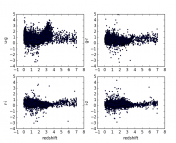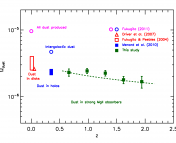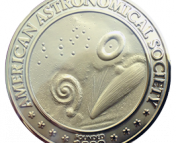
The undergrad research series is where we feature the research that you’re doing. If you’ve missed the previous installments, you can find them under the “Undergraduate Research” category here.
Are you doing an REU this summer? Were you working on an astro research project during this past school year? If you, too, have been working on a project that you want to share, we want to hear from you! Think you’re up to the challenge of describing your research carefully and clearly to a broad audience, in only one paragraph? Then send us a summary of it!
You can share what you’re doing by clicking here and using the form provided to submit a brief (fewer than 200 words) write-up of your work. The target audience is one familiar with astrophysics but not necessarily your specific subfield, so write clearly and try to avoid jargon. Feel free to also include either a visual regarding your research or else a photo of yourself.
We look forward to hearing from you!
************
Collin Dabbieri
University of Oklahoma
Collin Dabbieri is a recently graduated undergraduate student from the University of Oklahoma. This research was conducted with advisor Dr. Karen Leighly, with further advice from Dr. Gordon Richards. Collin will be starting graduate school for astrophysics at Vanderbilt University in the fall.
Quasar outflows may be a crucial component of galaxy evolution. They have been determined to exist at all distance scales throughout their host galaxies (from <1 parsec from the central quasar to many kiloparsecs) and can carry enough energy to significantly alter star formation. These outflows are directly observable as Doppler blue-shifted absorption lines in Broad Absorption Line Quasar (BALQ) spectra. The rarest subclass of BALQ with the most diverse spectra are known as FeLoBALQs, named for the presence of Fe II absorption lines and low ionization absorption lines like Mg II. FeLoBALQs are important because they have the thickest outflows, meaning they may be uniquely energetic. They also show absorption lines from thousands of different Fe II transitions, offering us unique constraints on the physical conditions of their outflows.
We trained a Convolutional Neural Network (CNN) to identify FeLoBALQs in Sloan Digital Sky Survey Quasar Catalog spectra. CNNs require large training sets, and as there were fewer than 200 identified FeLoBALQs prior to this work, we created synthetic training data. With our novel spectral synthesis software, SimBAL, we generated realistic FeLoBALQ spectra by drawing from distributions of the physical conditions of their outflows (i.e. density, ionization parameter, column density). FeLoNet has identified more than 400 FeLoBALQs, tripling the number known. The model’s success at classifying real objects with diverse morphologies from synthetic training data speaks to the potential for deep learning in spectral classification.





